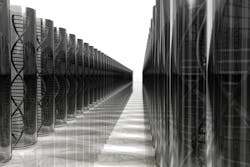Amyotrophic lateral sclerosis (ALS) is a rapidly progressive and fatal degenerative disease affecting the nerve cells in the brain and spinal cord responsible for controlling voluntary muscle movement. “Sporadic” or non-inherited ALS, accounts for roughly 90% percent of cases, and 10% of cases are due to known genetic mutations.
By studying lab-grown neurons derived from skin or blood cells from 10 normal controls, eight with an ALS causing mutation, and 17 with non-inherited ALS, researchers have found a possible starting point for the dysfunction that causes the disease. The study, which was published in Science Translational Medicine was funded in part by the National Institute for Neurological Disorders and Stroke (NINDS), part of the National Institutes of Health (NIH).
Using a library of ALS patient-derived cells, the research team led by Jeffrey Rothstein, MD, PhD, at Johns Hopkins University School of Medicine developed induced pluripotent stem cell (iPSC)-derived neurons from the patients’ cultured cells to discover a common defect regardless of whether the cell came from persons with inherited or non-inherited ALS. They report that in ALS nerve cells, there is an accumulation of a protein called CHMP7 in the nucleus of cultured nerve cells as well as in ALS samples from the brain region that controls movement. Treatments that decrease the amount of CHMP7 in the cultured cells prevented a series of abnormalities that are characteristic of ALS.
This study builds on an earlier paper by the Rothstein lab that looked at the most common genetic cause of ALS, a mutation in the C9orf72 gene (also referred to as the “C9 mutation”). There, they showed that the C9 mutation produced defects in a structure called the nuclear pore that is responsible for moving proteins and other molecules in and out of the nucleus of cells. Specifically, they found that certain proteins were absent from the pore, causing a domino-like effect in which the entire pore breaks apart.
The researchers looked at nerve cells grown from induced pluripotent stem cells (iPSCs), which are a type of stem cell that can be created from samples of a person’s skin or blood. These cells behave very much like other stem cells in that they can be turned into many different cell types in a lab setting, including nerve cells. By working with Answer ALS, a national ALS biological data and iPSC effort run by Rothstein, the researchers were able to access iPSCs derived from both familial and sporadic ALS patients.
What they found was that the accumulation of CHMP7 within the nucleus occurred at least one week prior to the development of nuclear pore abnormalities. Normally, CHMP7 is quickly removed once it enters the nucleus, but in both C9 and sporadic ALS iPSC-derived neurons, the accumulation persisted. If an antisense oligonucleotide drug, which stops cells from manufacturing specific proteins, was used to decrease the amount of CHMP7 within the ALS neurons, the pore never degraded. Finally, if a mutated form of CHMP7 that cannot be removed from the nucleus was added to healthy neurons, the pore degraded much like what was seen in ALS neurons, suggesting that the presence of CHMP7 within the nuclei of neurons could be a lynchpin event in the development of the disease.
One abnormality common to all forms of ALS is the mislocalization of another protein, TDP-43. Normally found in the nucleus, TDP-43 leaks out into the surrounding cytoplasm in ALS where it clumps together into aggregates, leading to loss of function changes in various types of RNA, which are critical for the translation of certain genes into proteins. Eventually this is also seen in iPSC-derived neurons from both C9 and sporadic ALS patients. Following treatment with the antisense oligonucleotides for CHMP7, the TDP-43 mislocalization was no longer seen and the RNA defects were all corrected.

